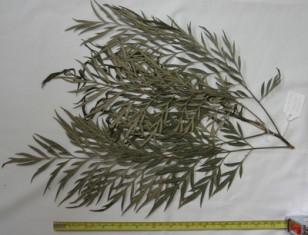ALA’s new Image Repository – Morphbank
Peter Brenton and Robyn Lawrence, Atlas of Living Australia.
The Atlas of Living Australia (ALA) is excited to join forces with Morphbank, the long-established international repository for the scientific curation of online biological images. Morphbank holds close to 275,000 images and its parent node resides at the School of Computational Science (SCS) at Florida State University, Tallahassee, USA.
Dave Matthews, from the Atlas of Living Australia (ALA) is working with Greg Riccardi’s development team in the USA to establish the Australian node of Morphbank. The site is now available!
The Australian node of Morphbank will store images and related data relevant to Australian biodiversity. It will contain a copy of all Morphbank’s Australian images, and the team plans to add more collections over time e.g. the Australian National Insect Collection images.
ALA is encouraging holders of Australian image collections, whether in museums, herbaria, educational institutions, agricultural departments, amateur naturalist groups or keen citizen scientists to consider adding their collection to Australia’s node of Morphbank.
The images range from the small-scale – electron microscopy and line drawings, through to the large-scale – images of whole specimens and photos of species in their natural environment.

Grevillea robusta: http://www.morphbank.net/?id=139651
Users search the metadata index to select an image, and then choose the resolution and size to fit their requirements. Morphbank allows users to annotate the images with extra details, collaborate on the taxonomic identity of an image and highlight parts of an image’s specimen.
Morphbank enforces strict curatorial controls on the management of image collections. Images lodged in Morphbank must contain data that describes the image and its provenance and provides the curatorial information associated with specimens. Images are linked to the appropriate place in the taxonomic hierarchy.
The code behind Morphbank is open-source software. Images stored in Morphbank are available under the creative commons licence; which generally means they are free to download and use for non-commerical purposes given the appropriate attribution.
ALA and the Morphbank development team from the USA are collaborating on the extension of Morphbank to meet ALA’s needs, such as multi-media capabilities. ALA plans to integrate Morphbank in many areas, especially in its citizen science portal, species profile pages and the images used in identification keys.
For more information, contact Peter Brenton at atlasoflivingaustralia@csiro.au.